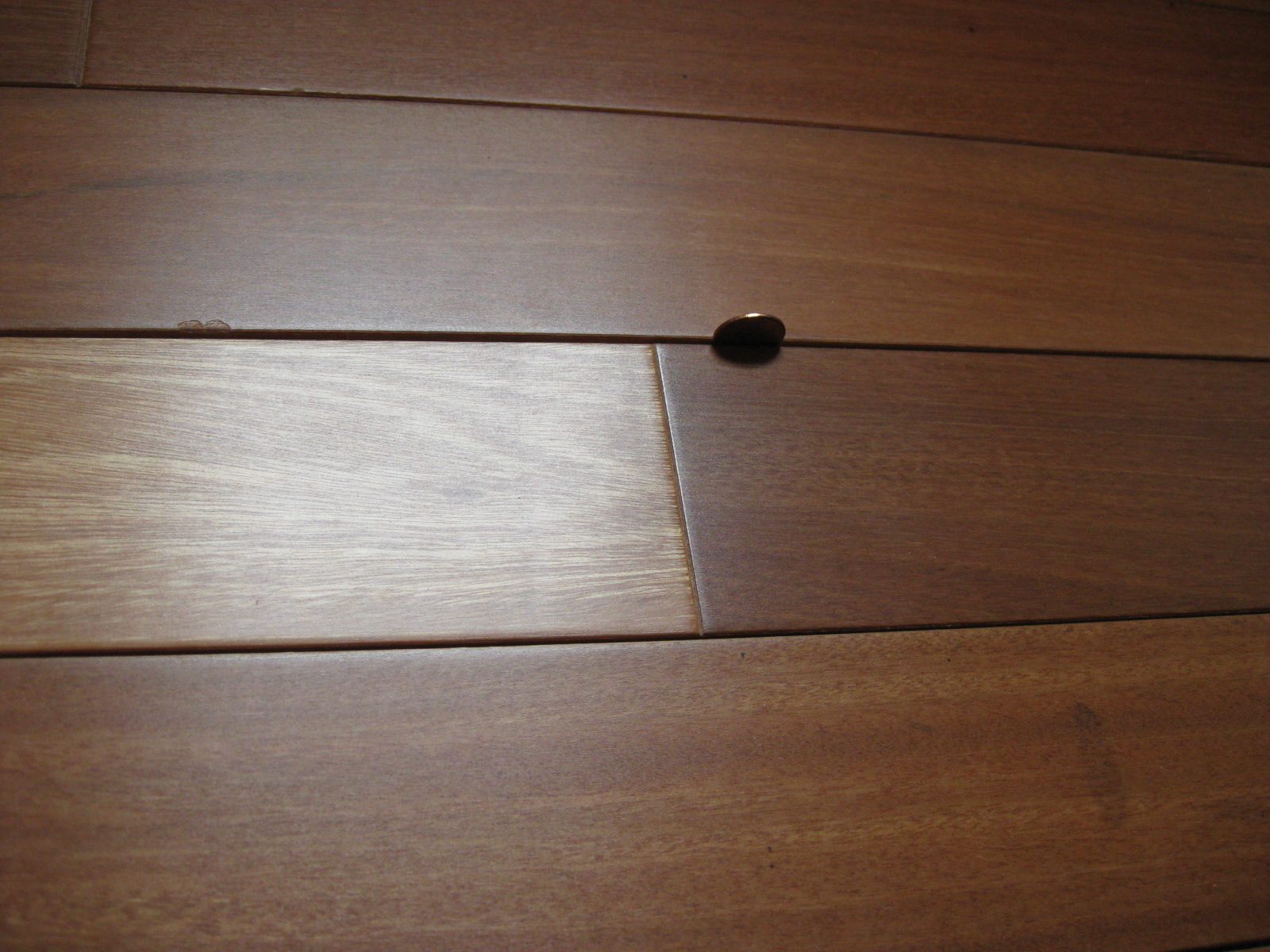Cupping And Gapping: Moisture And Its Effects on Solid Wood Flooring
By
Suzanne Hendrix,
01/04/13
The vast majority of problems encountered in wood flooring are moisture related. Wood has a cell structure that enables it to take on and give off water in a very predictable manner depending on the moisture presented by the surrounding environment. Each wood species has a unique "shrinkage factor" which defines how much said species will expand and contract tangentially (for flat sawn pieces) and radially (for quarter sawn pieces) as its moisture content increases or decreases. All woods are the same as regards this absorbency characteristic, the difference being whether they expand and contract more or less in relation to other woods – a difference that varies based on their inherent shrinkage factors. At the most basic level, wood species are considered more or less stable based on whether they expand and contract more or less with changes in their moisture content (MC). There are other variables that impact wood stability but the shrinkage factor is primary.
All wood for solid wood flooring manufacture is dried in dry-kilns prior to being molded into a floor board. Not all wood is kiln-dried identically nor to the same moisture content however. Some markets ask for wood flooring that is dried to 10% +/- 2% MC (or to an effective 8-12% MC range). Other markets request that their wood flooring be dried in a 6-10% MC range. Regardless of how it is dried initially, it is a fact that wood cannot be deemed as "properly" dried for any and all markets or environmental conditions because all places and environments are not equal. High natural ambient moisture in one locale (hot and humid) may be best served with a 12% MC floor board while the "correct" MC for wood flooring in a desert dry environment might be 5-6% MC. Acclimation is the process for final moisture equalization to a particular set of job-site conditions. Acclimation is necessary and critical to the installation process because ambient moisture levels are not the same in all places.

Gapping: Contraction from boards losing moisture post-install.
There are more and better humidity and environmental control systems for interior living conditions than ever before, but clearly all homes do not possess them. Humidifiers, dehumidifiers, air-conditioners, heating systems and outside ambient moisture conditions can all effect changes in the ambient moisture conditions which may, over time, effect changes in the MC of a given wood floor. Proper acclimation of a wood flooring product prior to install will equalize the MC of the floor boards and subfloor to the conditions present at that time, but if those conditions significantly change over time then some corresponding expansion/contraction change in the wood could also be expected. Some seasonal gapping or cupping may result from such changes in the ambient moisture conditions.
Cupping: Expansion from boards taking on moisture post-install.
Most moisture related wood flooring complaints can be avoided if proper acclimation and installation guidelines are followed. The National Wood Flooring Association (NWFA) provides installation guidelines that are the basis of most manufacturer recommendations. Their website,
www.nwfa.org, is a good source of additional information and technical support on all points related to wood flooring. Nova recommends that whenever possible NWFA certified flooring installers should be employed as they have been trained in the proper way install a wood floor. Moisture meters (and knowing how to calibrate and use them), digital calipers, and digital cameras are all basic tools of the flooring trade and every installer should be versed in how to use them properly. If an installer is not talking about acclimation and taking moisture readings of the flooring boards and sub-floor prior to starting the install, then it can be assumed that proper installation guidelines are not being followed and there is a greater risk for avoidable moisture-related problems later.
Wood flooring is a gorgeous natural and uniquely beautiful addition to any home. Understanding the relationship between wood and water, and following industry standard installation and maintenance guidelines helps to reduce problems and ensure a lifelong happy relationship between a homeowner and their wood floor.
If you have any questions or need further information, please don't hesitate to
contact us.
http://novausawood.com
By
Suzanne Hendrix,
01/04/13
Comments?
Display Name:
Contact Email:
please be respectful of others' opinions and do not use profanity.
comments may be edited for objectionable content.
Email addresses are not publicly posted, and are used to follow up directly with your comment as needed.




























